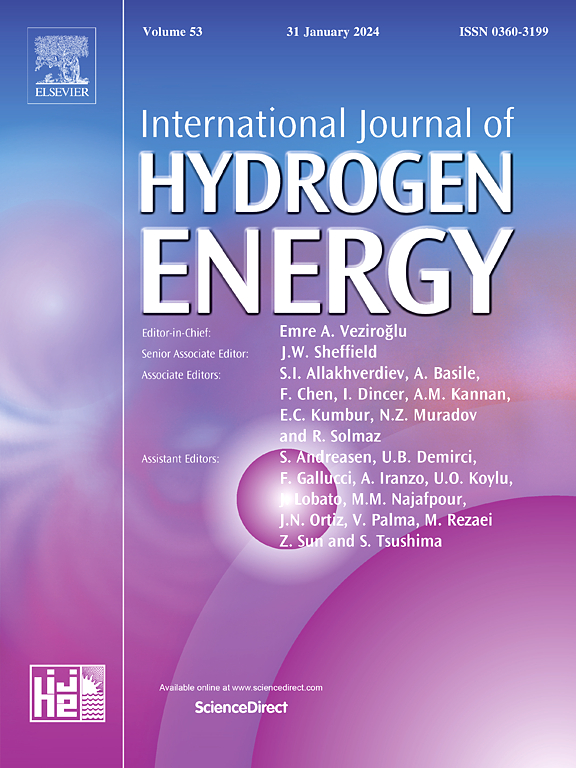锆钴合金中碳杂质生成甲烷的机理研究
IF 8.1
2区 工程技术
Q1 CHEMISTRY, PHYSICAL
引用次数: 0
摘要
锆钴合金在大规模氢同位素储气方面有着广泛的应用,但在金属冶炼过程中不可避免地引入微量碳杂质。在ZrCo储氢循环中,碳杂质可能与氢反应生成甲烷,这一点在实际测试中往往被忽视,特别是关于碳和氢直接生成甲烷的研究相对较少。本研究揭示了Zr-Co合金中C杂质与氢反应生成甲烷的机理。通过对573 K、673 K和773 K不同脱氢温度下初始几个氢反应循环释放的气体组成进行分析,发现甲烷的产生量有随温度升高而增加的趋势。样品分析表明,碳在宏观尺度上的迁移过程与表观焓变的降低有关,而Zr-Co金属高温释氢过程中的晶格重构似乎是影响这一过程的关键因素。此外,通过计算化学与实验数据的结合,揭示了晶体表面甲烷化反应的可能途径。碳原子比石墨更容易发生甲烷化,这是因为在锆钴表面甲基自由基的形成促进了甲烷的生成。本文章由计算机程序翻译,如有差异,请以英文原文为准。
Investigation of the mechanism of methane formation from carbon impurities in zirconium–cobalt alloys
Zirconium-cobalt alloys have a wide range of applications for large-scale hydrogen isotope gas storage, but trace carbon impurities are inevitably introduced during metal smelting. Carbon impurities may react with hydrogen to form methane in the ZrCo hydrogen storage cycle, which is often overlooked in practical testing, especially when there have been relatively few studies about the direct formation of methane from carbon and hydrogen. In this study, we reveal the mechanism of C impurities in Zr–Co alloys reacting with hydrogen to form methane. By analyzing the gas composition released during the initial several hydrogen reaction cycles at different dehydrogenation temperatures of 573 K, 673 K and 773 K, it is found that the amount of methane produced tends to increase with increasing temperature. Sample analysis indicates that there is a process of carbon migration on a macroscopic scale that is associated with a reduction in apparent enthalpy change, and lattice restructuring during the high-temperature hydrogen release of Zr–Co metals appears to be the key factor influencing this process. In addition, by combining computational chemistry with experimental data, we have revealed a possible pathway for the methanation reaction on the crystal surface. The carbon atom is more prone to methanation than graphite because the formation of methyl radicals on the Zr–Co surface promotes methane production.
求助全文
通过发布文献求助,成功后即可免费获取论文全文。
去求助
来源期刊

International Journal of Hydrogen Energy
工程技术-环境科学
CiteScore
13.50
自引率
25.00%
发文量
3502
审稿时长
60 days
期刊介绍:
The objective of the International Journal of Hydrogen Energy is to facilitate the exchange of new ideas, technological advancements, and research findings in the field of Hydrogen Energy among scientists and engineers worldwide. This journal showcases original research, both analytical and experimental, covering various aspects of Hydrogen Energy. These include production, storage, transmission, utilization, enabling technologies, environmental impact, economic considerations, and global perspectives on hydrogen and its carriers such as NH3, CH4, alcohols, etc.
The utilization aspect encompasses various methods such as thermochemical (combustion), photochemical, electrochemical (fuel cells), and nuclear conversion of hydrogen, hydrogen isotopes, and hydrogen carriers into thermal, mechanical, and electrical energies. The applications of these energies can be found in transportation (including aerospace), industrial, commercial, and residential sectors.
 求助内容:
求助内容: 应助结果提醒方式:
应助结果提醒方式:


